
15 minute read
The impact of extreme rainfall on aquaculture
Fisheries and Aquaculture 2020 (SOFIA), aquaculture’s contribution to global fish production continues, reaching 82.1 million tonnes in 2018, accounting for 46% of Production Technologythe estimated 179 million tonnes of global fish production. 53 Climate is always crucial to aquaculture; adequate rain can supplement water and improve culture water quality, while extreme rainfall can cause problems and huge losses. Heavy rains and dead fish after rains. Left: Rohu (Labeo rohita) pond in the rain in Myanmar. Right: Tonnes of dead fish were found floating on water surface near Jakarta after torrential rains (Daily Mail 2015). In this article, we explore events in fish and shrimp farming, with the occurrence of rains and what we can do to reduce the negative impacts.
There is an extensive list of events which can be managed with a good understanding of impact and prompt action by farmers
By Li Bing, Dong Qiufen and Zhang Song
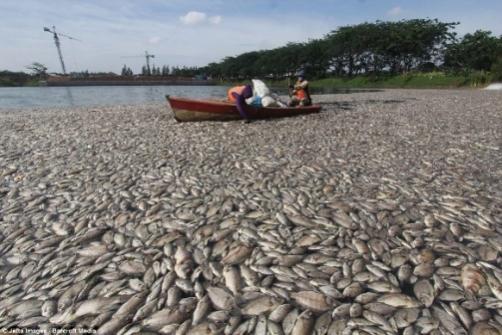
Heavy rains and dead fish after rains. Left: Rohu (Labeo rohita) pond in the rain in Myanmar. Right: Tonnes of dead fish were found floating on water surface near Jakarta after torrential rains (Daily Mail 2015).
Aquaculture plays a significant role in supplying aquatic products which are important food sources for the global population. According to FAO’s State of World Fisheries and Aquaculture 2020 (SOFIA), aquaculture’s contribution to global fish production continues, reaching 82.1 million tonnes in 2018, accounting for 46% of the estimated 179 million tonnes of global fish production.
Climate is always crucial to aquaculture; adequate rain can supplement water and improve culture water quality, while extreme rainfall can cause problems and huge losses. In this article, we explore events in fish and shrimp farming, with the occurrence of rains and what we can do to reduce the negative impacts.
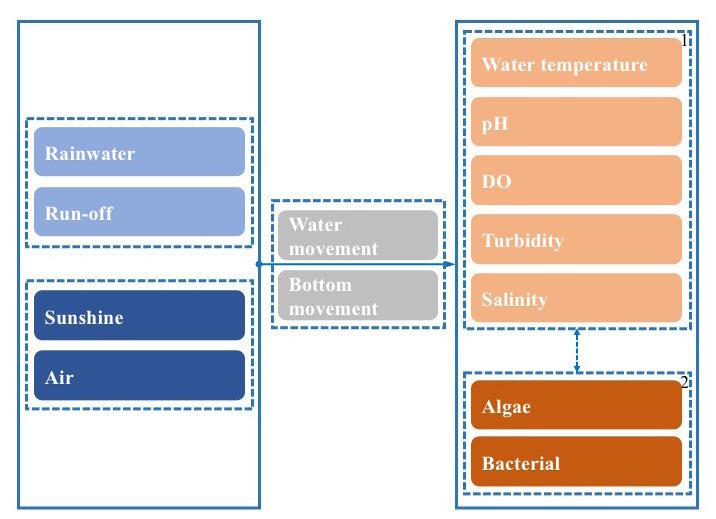
The dynamic processes
During rainy periods, rainwater and run-off will mix with the original pond water. While sunlight will be blocked by rain clouds, at the same time, the air temperature will be lower. The atmospheric pressure is usually quite low during the early part of the rains and sometimes occurs with strong winds. Besides these direct effects on the water environment, rains will also lead to water movements on the pond surface and at the pond bottom, further affecting the state of the pond environment (Figure 1).
Water temperature
Pond water temperatures often drop with heavy rain. According to Rooney et al. (2018), rain may have effects on the pond water surface in four ways: evaporation and cooling of the near water surface-air during precipitation; direct rain heat fluxing into the pond; mixing of the pond surface layer through the flux of kinetic energy; and finally, convection mixing of the pond surface layer. Research indicated that during the days with heavy rainfall, there may be a reduction in lake surface temperatures of approximately 0.3°C by the end of the day compared to the days with light and moderate rainfall.
The dynamic processes
During rainy periods, rainwater and run-off will mix with the original pond water. While sunlight will be blocked by rain clouds, at the same time, the air temperature will be lower. The atmospheric pressure is usually quite low during the early part of the rains and sometimes occurs with strong winds. Besides these direct effects on the water environment, rains will also lead to water movements on the pond surface and at the pond bottom, further affecting the state of the pond environment (Figure 1).
Figure 1. Effects of rain on the water environment and pond ecosystem
pH
The suitable pH in pond culture water is around 7.0-8.5, while the pH of most rainwater is below 6.6 and can be much lower with acid rain (Vet, 2014). Moreover, photosynthesis will be affected due to poor conditions for algae development and diminished sunlight during rains. The pH will then be more than 1.0 after the rains.
Salinity
The mineral content in rainwater is low, although the run-off may carry some minerals. After extreme rain, the salinity declines in full seawater and brackish water bodies, as shown in Table 1.
Location Ca2+ Mg2+ Na+ K+ NH4 + Reference
Jordan 165.3 93.12 130.6 85.21 75.36 O.A. Al-Khashman, 2005 Italy 5.18 70 77 17 25 Le Bolloch, 1995 Tirupati, India 150.7 55.51 33.08 33.89 20.37 P. Mouli, S. Mohan, 2005 Newark, USA 6.0 3.3 10.9 1.3 24.4 F. Song, 2009 Shanghai, China 204.0 29.6 50.1 14.9 80.7 X. F. Huang, 2010 Table 1. Chemical analyses of rainwater in various locations (in μeq/L).
Dissolved oxygen
Item Contribution and consumption
Aeration Contributed 50% of the total DO (Zhou Jinfeng, 2004) Algae Contributed 60-95% of the total DO before the use of Aeration (Lei Yanzhi, 1983) Air dissolution 4.7-40% before use of aeration (Lei Yanzhi, 1983) Water respiration 59.6-63.9% in marine water culture (Xu Ning, 1999) Bottom respiration 16-30% (Pan Tengfei, 2010; Lin Bin, 1995) Animal respiration Red tilapia 16%, Penaeus chinensis 14% (Xu Ning, 1999) Table 2. Contribution and consumption of dissolved oxygen (DO) by various sources.
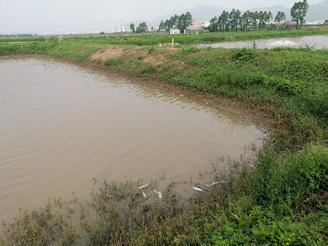
Table 2 and Figure 2 list the main sources of dissolved oxygen and consumers of dissolved oxygen in a pond. As the various fish farming models and ponds have different dissolved oxygen conditions, there can be a huge risk with the decline in dissolved oxygen during rainy days.
Aerators can supply more oxygen during the rains and lower water temperatures can lead to less biological respiration consumption, but the photosynthesis of algae will be limited due to less sunlight and environmental stress. Low air depression will reduce the oxygen dissolution from the air into the water, while potential algae crash and bottom movements may worsen dissolved oxygen conditions.
Turbidity
Turbidity is the measure of water clarity. Suspended particles are the main source of turbidity (Swift, 2006). Run-offs from rains can carry a large volume of insoluble solids into the water. Simultaneously, the soil and water movements at the pond bottom can release insoluble solids into the water body. Dead microorganisms can continuously contribute to the suspension of solids and increase water turbidity.
The effects of suspended solids on fish can be divided into three categories: the lethal effect means a high concentration of suspended solids can directly kill the individual fish; sublethal effects, such as reducing growth rate and resistance to diseases, interference with embryo hatching, and finally, behavioural influence, such as the avoidance response of hardhead trout to turbid waters (Biosson, 1982).
Changes in turbidity of pond water after the rain in Vietnam. On the right, water samples showed that numerous sediment from turbidity after precipitation. Changes in turbidity of pond water after the rain in Vietnam. On the right, water samples showed that numerous sediment from turbidity after precipitation.
Turbidity
Turbidity is the measure of water clarity. Suspended particles are the main source of turbidity (Swift, 2006). Run-offs from rains can carry a large volume of insoluble solids into the water. Simultaneously, the soil and water movements at the pond bottom can release insoluble solids into the water body. Dead microorganisms can continuously contribute to the suspension of solids and increase water turbidity. The effects of suspended solids on fish can be divided into three categories: the lethal effect means a high concentration of suspended solids can directly kill the individual fish; sublethal effects, such as reducing growth rate and resistance to diseases, interference with embryo hatching, and finally, behavioural influence, such as the avoidance response of hardhead trout to turbid waters (Biosson, 1982).
Algae
Low light and lower water temperature will affect the reproduction and activities of algae. The sudden environmental change leads to extreme stress on algae populations, causing a crash. Algae Low light and lower water temperature will affect the reproduction and activities of algae. The sudden environmental change leads to extreme stress on algae populations, causing a crash.
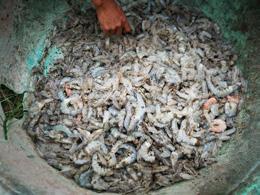
bacteria in the water body and at the bottom of the shrimp ponds decreased after heavy rainfall. However, the number of Vibrio bacteria increased. The Simpson and McIntosh indices decreased significantly (P<0.05).
Shrimp (Penaeus vannamei) in Vietnam and largemouth bass (Micropterus salmoides) in China suffered heavy mortality after extreme rains
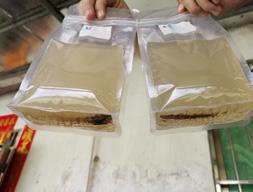
Pond bottom
Disturbances at the pond bottom are due to the disruption in water flow, depression and the potential temperature difference between upper and lower water layers. The movements at the pond bottom will release harmful compounds such as hydrogen sulphide (H2S), methane (CH4), ammonia (NH3) and nitrite (NO2 -) into the water in a short time. In turn, this will consume large volumes of dissolved oxygen, and the algae, parasites, pathogens and other harmful living organisms such as pathogenic bacteria will have the chance to bloom.
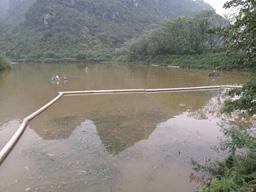
Hazards
Shrimp (Penaeus vannamei) in Vietnam and largemouth bass (Micropterus salmoides) in China suffered heavy mortality after extreme rains
Stress
Item Harmful effects
pH • In shrimp held at different pH levels (5.6 or 7.8), haemolymph osmoregulation was worse at low pH (P < 0.01) (Allan, 1992). • As the pH mutation value increased, the antibacterial and lysogenic activities of shrimp decreased and the phenoloxidase activity increased (Pan, 2002).
DO • Tilapia under low dissolved oxygen condition (1.5mg/L) increased respiration rate (Xu, 2005). • Low dissolved oxygen caused catfish growth and feed utilisation to decline (Andrews, 1973). • Enzyme activity of catalase and GST increased in the animal gills submitted to anoxia, and SOD activity decreased. (De Oliveira, 2005).
Salinity

bacteria in the water body and at the bottom of the shrimp ponds decreased after heavy rainfall. However, the number of Vibrio bacteria increased. The Simpson and McIntosh indices decreased significantly (P<0.05). • When the gap between internal and external osmolarity pressure was too large, the shrimp consumed too much
Pond bottom
Disturbances at the pond bottom are due to the disruption in water flow, depression and the potential temperature difference between upper and lower water layers. The movements at the pond bottom will release harmful compounds such as hydrogen sulphide (H2S), methane (CH4), ammonia (NH3) and nitrite (NO2 -) into the water in a short time. In turn, this will consume large volumes of dissolved oxygen, and the algae, parasites, pathogens and other harmful living organisms such as pathogenic bacteria will have the chance to bloom.
Hazards
Shrimp (Penaeus vannamei) in Vietnam and largemouth bass (Micropterus salmoides) in China suffered heavy mortality after extreme rains
Stress
Item Harmful effects
pH • In shrimp held at different pH levels (5.6 or 7.8), haemolymph osmoregulation was worse at low pH (P < 0.01) (Allan, 1992). • As the pH mutation value increased, the antibacterial and lysogenic activities of shrimp decreased and the phenoloxidase activity increased (Pan, 2002).
DO • Tilapia under low dissolved oxygen condition (1.5mg/L) increased respiration rate (Xu, 2005). • Low dissolved oxygen caused catfish growth and feed utilisation to decline (Andrews, 1973). • Enzyme activity of catalase and GST increased in the animal gills submitted to anoxia, and SOD activity decreased. (De Oliveira, 2005).
Salinity
Pond bottom
Disturbances at the pond bottom are due to the disruption in water flow, depression and the potential temperature difference between upper and lower water layers. The movements at the pond bottom will release harmful compounds such as hydrogen sulphide (H2S), methane (CH4), ammonia (NH3) and nitrite (NO2-) into the water in a short time. In turn, this will consume large volumes of dissolved oxygen, and the algae, parasites, pathogens and other harmful living organisms such as pathogenic bacteria will have the chance to bloom.
Hazards
• When the gap between internal and external osmolarity pressure was too large, the shrimp consumed too much
Figure 2. The main sources and consumptions of dissolved oxygen (DO) in a pond.
An algae crash in a shrimp pond after a rain in China
Stress

Bacteria
The abundance of bacteria tends to decrease with lower Bacteria temperatures and environmental stress. The bacterial community will also change. In a study, Hu (2010) showed The abundance of bacteria tends to decrease with lower temperatures and that without microecological preparations, the number of heterotrophic bacteria in the water body and at the bottom environmental stress. The bacterial community will also change. In a study, Hu (2010) of the shrimp ponds decreased after heavy rainfall. However, the number of Vibrio bacteria increased. The Simpson and showed that without microecological preparations, the number of heterotrophic McIntosh indices decreased significantly (P<0.05).
Stress refers to the non-specific systemic response of fish when stimulated by various internal and external environmental factors. If any stimulus reaches a certain intensity, in addition to specific changes related to the stimulus, it will also cause a series of systemic non-specific reactions that are not related to the nature of the stimulus. Pickering (1981) divided the adaptive response of fish to stress into three levels. The first-level response refers to the changes in the body’s neuroendocrine activity, the secondlevel response is a series of physiological, biochemical and immune changes caused by the first-level response, and the third-level response is based on the physiological basis of the second-level response, such as slower growth rate, changes in fish behaviour and reduced disease resistance.
Item Harmful effects
pH • In shrimp held at different pH levels (5.6 or 7.8), haemolymph osmoregulation was worse at low pH (P < 0.01) (Allan, 1992). • As the pH mutation value increased, the antibacterial and lysogenic activities of shrimp decreased and the phenoloxidase activity increased (Pan, 2002).
DO
Salinity
Temperature • Tilapia under low dissolved oxygen condition (1.5mg/L) increased respiration rate (Xu, 2005). • Low dissolved oxygen caused catfish growth and feed utilisation to decline (Andrews, 1973). • Enzyme activity of catalase and GST increased in the animal gills submitted to anoxia, and SOD activity decreased. (De Oliveira, 2005). • When the gap between internal and external osmolarity pressure was too large, the shrimp consumed too much energy to regulate the osmotic pressure. Thus, affecting shrimp growth, survival, development, respiration, metabolism, osmotic pressure regulation capacity, the composition of free amino acids and many other physiological characteristics (Brito, 2002). • Sudden temperature change caused a reduction in the blood cell content in crustaceans and this led to the body’s immune defence and weakened disease resistance (Moullac and
Haffner, 2000).
Table 3. Different stress factors and the potential harmful effects on aquatic animals
Harmful and poisonous compounds and organisms
Due to the impact of rainfall on the pond environment and ecology, harmful poisonous compounds, such as NH3, NO2-, H2S, and harmful algae will increase. Blue-green algae can produce microcystins in large quantities during algal blooms (Joanna, 2013), which can be a big threat to both aquatic animals and human communities. Harmful algae such as blue-green algae and dinoflagellates have a stronger ability to use light when compared to normal algae like green algae and diatom. The pond bottom movements will release more organics into the water and cause the harmful algae to become a predominant population during rains and bloom on sunny days after rain.

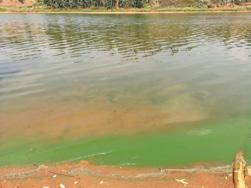
Euglena bloom (left) and blue-green algae bloom (right) after rains in pond in India.
Pathogen blooms
The dramatic environmental change breaks the original balance of the ecosystem, pathogens may dominate while bottom soil and water movements will accelerate this process. Bacterial pathogens and parasites become widespread after the rains, as the eggs of parasites may be released into the water from the pond bottom during the rains. Best practices range from improving the pond bottom to using health care products, probiotics, disinfectants and fertilisers. The pond bottom can be improved through regular use of conditioners to reduce the harmful effects when the soil-water interface is disturbed. Treatment can be done before the rains. There are several different bottom conditioners ranging from probiotics, oxidants and surfactants, which should be used at the right time and in a proper way.
Quicklime is a versatile product for aquaculture. It can increase pH, supplement calcium, kill pathogens and absorb floating matters. It can be applied evenly around the pond wall to prevent the soil from washing into the water and also added directly into the water to improve water quality.
In terms of health care products, there are, for example, Vitamin C, Vitamin E and β-gluten, which can be used to increase fish immunity or relieve fish stress. They can be used occasionally in water or continuously in the feed. They prevent stress in aquatic animals and reduce the risk of infections by improving vitality and immunity.
The essential minerals in water are crucial for fish osmotic pressure adjustment and are also important nutritional resources for aquatic animals. Since rainfall will reduce the concentration of minerals in the water body and increase the animal’s demand for minerals (shrimp are prone to moulting during rains), it is helpful to supplement minerals after the rains for fish and shrimp.
Bacteria and algae are essential in the aquaculture water ecosystem. Probiotics and fertilisers can help growth of beneficial bacteria and algae and rebuild the broken ecosystem after the rains. Sometimes, we may face sudden outbreaks of pathogens after the rains. Disinfection can control some common pathogens, such as harmful bacteria and viruses and pesticides can kill some harmful parasites to restore the water ecosystem.
However, besides taking good care of pond water and aquatic animals, fish farmers should safeguard the pond structure, power supply and human safety to carry out sustainable farming practices.
Although heavy rainfalls can be detrimental to fish farming, we can protect aquatic animals from diseases and mortality with the proper preventive measures and treatments combined with a good understanding of the effects of rains in aquaculture. The China-ASEAN Fisheries Resources Conservation and Exploitation Fund is supporting more research on the impact of extreme rainfall on aquaculture and its prevention to achieve sustainable aquaculture.
Li Bing is Deputy Technical Director
Dong Qiufen is Director of International Business. Email: qiufendong@gmail.com
Dr Zhang Song is Vice President of Nutriera Group










